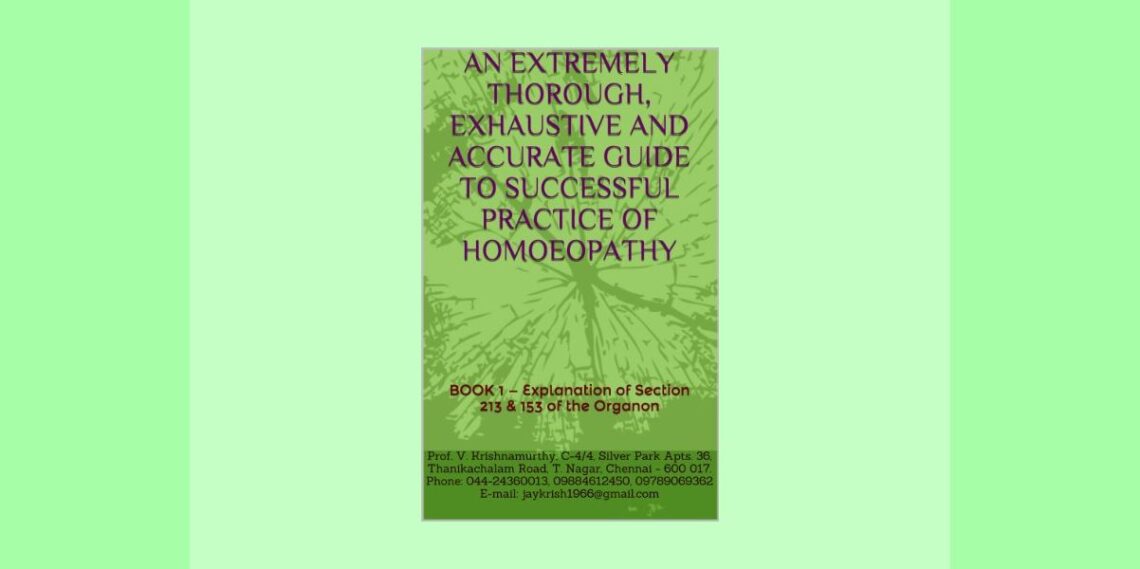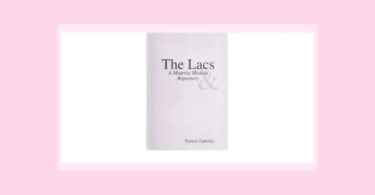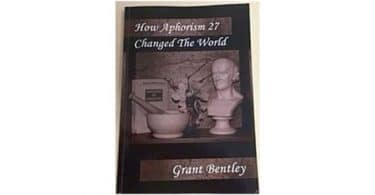Author: Dr. Sanjay Modi
Publisher: Krupa Publications, Mumbai
Reviewed By: Dr. Leela DSouza
—————————————
I have known Dr. Sanjay Modi from 1986, when he lectured on “Organon and Philosophy” and took great pains to help us neo-homeopaths in the making, thoroughly understand the principles set forth by Hahnemann in his Aphorisms. I owe in great part to him, my deep perception of each word in every aphorism, pregnant with meaning as Hahnemann intended them to be.
So with great interest, I began reading his book “Accurate Homeopathy”, wondering what other treasures in the Aphorisms he intended to bring to our notice. I feel enlightened and a have reached a deeper awareness (Sanjay’s favourite word) of various philosophical and clinical aspects, some new to me, some reinforcing my experience and some nudging me into deeper thought into the art and science of homeopathic practice. I attempt to highlight below, some aspects of the book that interested me and would help students as well as practitioners of homeopathy.
Sanjay starts with defining the science of reasoning, which is Logic. He takes us to a point of in-depth understanding of Scientific Logic, in order to explain how Hahnemann himself deducted the Therapeutic Law of Nature and miams on this basis. Through Analogy and Enumeration, Hahnemann clearly established in Aphorisms 1-70 of the Organon, stating that “A Weaker dynamic affection is extinguished permanently by a stronger dynamic affection, which differs in kind, but is similar in manifestation to the former”, Aphorism 26.
In subsequent chapters Sanjay elaborates the requirements of putting this Law into application. He explains from a refreshing standpoint, the qualities of the Physician that are required to form the portrait of disease, right from the start of case-taking. Being “Unprejudiced” is one the central characteristic of a physician, in association with reaching a level of “Awareness“. Further, he criticizes some methods of teaching Analysis and Evaluation, which do not encourage the student/homeopath to form an accurate Portrait of Disease reflecting a Synthesis of the whole for a similimum prescription.
I found this a valid criticism, as it also applied to some of my learning. In essence his intention is to bring to our notice that: “While (perception of the) Totality of Symptoms (Synthesis) is a product of using ones right brain, which is Holistic and Simultaneous since the right brain uses Intuition, Analysis and Evaluation is a product of using ones left brain, which is Logical and Sequential as the left brain uses Language.”
The next section studies the holistic understanding of the functioning of Man that is prevalent today, popularly explained on the basis of the Psycho-Neuro-Immuno – Endocrine Axis (PNIE). This understanding further explains the “Placebo Effect” and why it is a scientific fact. The holistic idea of disease is further elaborated in the subsequent chapters explaining the principles behind “Exciting Cause and Fundamental Cause” as explained in Aphorisms 5, 208, 90, 94.
His next step is to help us understand the “Totality of Symptoms”, as he perceives it. For Sanjay, it is not a thing, it is an event where the Subject (the Physician) becomes aware of the Object (the Patient). This Totality is the language of disease and remedies. He formulates a Trio (Modi’s Trio) for the three required criteria of the ‘Totality of Symptoms’:
Is each symptom a modified symptom?
Do these symptoms represent the remedy (similimum)?
Are the symptoms of the same degree in the remedy as they are in the patient?
He continues to get us firmly on track in our understanding of the principles comprising the make-up of an homeopathic prescription. This is an entertaining part of the book. For the first time I had a clearer understanding of Kent’s intentions, in giving his long winding “Lectures of the Materia Medica” that more often than not, put me to sleep!
Sanjay says, “What started as a classroom teaching technique by Kent with the intention of getting students interested in dry Materia Medica, became a full time clinical entertainment, or amusement. Kent’s recorded clinical cases do not reflect the drama, which is seen in his materia medica. He wisely separated his clinical practice from his classroom teaching.” He goes on to give us these examples of Kent’s clinical cases and prescriptions which are enlightening. Kent did not take case histories with a preponderance on the mental characteristics unless they constituted a predisposing (pre-existing) state for the symptoms of disease. The mental state in consideration then, was only a modified state from health.
For me the most significant and helpful part of the book was Sanjay’s description of “Characteristic Symptoms“. It would be the first time that I’ve seen the subject explained so lucidly, as to enable a student or even a practitioner like myself define Characteristic symptoms in analysis and synthesis of a case as “symptoms in the totality that (ultimately) characterize the remedy“. When we realize the significance of this, we would be careful about relying on ‘impure’ sources (which he elaborates) of the materia medica as against the clear proving of the remedy.
The next section on Susceptibility and Posology is an interesting personal perspective of the author where he derives “Modi’s Law of Potency Selection and Repetition” based on what he terms “Biological Law“. He gives his own clinical cases and quotes from old Master prescribers of homeopathy, in support of his observations. He asks each of us practitioners, in conclusion, to understand and be committed to the highest ideal of cure with our homeopathic remedies, as Hahnemann detailed in Aphorism 2, towards a 1. Rapid 2. Gentle 3. Permanent restoration of health.
The book can be quite serious reading in parts, but Sanjay lightens it with personal anecdotes and moral stories that entertain at the same time. The addition of a good number of clinical cases also makes for interesting reading. I believe Sanjay Modi, with sincerity, has something important to convey to the homeopathic community in his simple and direct interpretations of various aphorisms of the Organon. I encourage both student and practitioner, to read his book as a guideline to an enlightened homeopathic practice.
For more details, please visit accuratehomeopathy.com
Save






